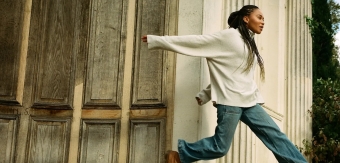Any regular movie-goer will be familiar with the use of CGI effects in sci-fi, fantasy and other animated movies. They can be as or even more visually stunning than a 'real' film because the only limit is the imagination of the director and the artists. But while these effects are often very visually impressive, the heart of the characters themselves could be lost without what is called performance (or motion) capture technology. You may well have seen this technology in action without realising it. Andy Serkis is the most prominent actor who most people wouldn't recognise if he was walking down the street, even though he plays the most monumental parts: King Kong, Gollum in The Lord of the Rings and now Captain Haddock alongside Jamie Bell in The Adventures of Tintin: Secret of the Unicorn.
Performance capture technology has been around for a number of years, in fact. It was used in Terminator 2 (Robert Patrick's morphing T-1000), Total Recall and The Mummy, for example. And although I wasn't wild about the film, The Polar Express starring Tom Hanks used it to great effect too. More recently, James Cameron's Avatar really pushed the boundaries in exploring what could be achieved with this rapidly advancing technology. As I said in my blog post about 4D cinema a few weeks ago, whatever one thinks of the story, the film itself was visually stunning and a massively impressive cinematic masterpiece.
Performance capture lends an added level of realism to animated films, and is different to an actor simply voicing a character, as would have been the case for other animated films such as Ice Age or Kung Fu Panda. As James Cameron put it, with performance capture technology, the characters they play on the screen are 110% them because they are acting 'as usual', opposite the other characters in a studio or location set (see left). The only difference is that they are not on a 'proper' dressed set (as obviously this is added later in CGI) plus they wear bodysuits and headgear which are wired up with thousands of motion detectors, tracking each and every move they make '“ as well as LED and infra-red readers which detect expressions and eye movements. These movements and details are then translated into lifelike computer-generated images. You can see how performance capture technology was used in Avatar in the video below:
Performance capture is an industry which has already made massive strides since Avatar. So dedicated to the use, development and power of this technology is Andy Serkis (Captain Haddock in Tintin) that he's even set up his own world-class production studio in London '“ the Imaginarium '“ which specialises in providing these effects. He says, "Performance capture is perceived as a special effects tool for films and video games, but it has the potential to be the creative interface between what we imagine and the realised world... It can free the imagination, adding a new dimension to acting and the visual and performing arts." Serkis even hopes it will be used for live performances to create performance-capture creatures in rock concerts and ballets.
Tintin, of course, is a cartoon by Belgian artist Herg©, so performance capture is an ideal vehicle for this animated film. I think he would have approved of Spielberg's finished product, personally, although the reception by some die-hard Tintin fanatics has been lukewarm. But let's not forget that Herg© himself actually wanted Spielberg to make the movie one day, as reported in a phone conversation between the two as far back as the days of Raiders of the Lost Ark. The main objections are in how the film is rendered. Herg© drew the characters with a famously clean line (indeed, his style was actually named 'ligne claire') and some people have criticised the film for being 'too blurry'. I don't want to belittle the opinion, but from what I've seen of the trailer, I think that is unnecessarily taking away from Spielberg's overall achievement of making a stunning performance-captured visual feast.
Serkis insists that Tintin is 'the perfect use of performance capture because it [brings] an abstract cartoon character to life without losing the original energy and heart of the source material by Herg©. You'™re still playing the truth of the character, whether it'™s rendered finally as a more animated visual style or photo-real.' For me '“ and this is only my personal preference '“ I'm not so keen on the photo-real films which, now I think about it, is what I didn't like about Robert Zemeckis's The Polar Express. His reality-above-all-else rendering of Beowulf doesn't really appeal, either. But on the flip side, Andy Serkis's portrayal of the ape Caesar in Rise of the Planet of the Apes was so masterful in every respect that I think he's right to suggest that his performance-captured acting should be judged in the same way as that of actors playing 'real' people. It could even be argued that it's actually more difficult to give a heartfelt performance from the depths of your soul when you're covered in Lycra and electrodes, and you're knocking around in a stark studio on a wooden platform instead of a mountain top with inspiring panoramic views.
The Adventures of Tintin: Secret of the Unicorn is now showing at cinemas nationwide.
by Ashley Morrison
Ashley is a blogger, copywriter and editor
Follow me on Twitter @Ashley_Morrison
[email protected]
www.creativepool.co.uk/ashleymorrison





